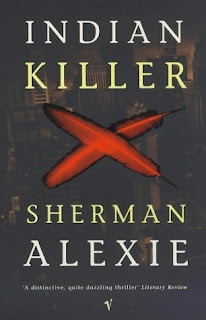Review: Diane Simmons' The Courtship of Eva Eldridge
A Story of Bigamy in the Marriage-Mad Fifties
When she is made executor to the estate of family friend Eva
Eldridge, the author comes into possession of a large collection of letters
which Eva has carefully bundled up and stored away. Kept with such conscientious orderliness, the
letters and check stubs and notes scribbled on the backs of envelopes form a
personal archive, and one gets the feeling that Eva, who never spoke to Simmons
about the deep mysteries of her life, had saved these letters, purposely, so
that one day someone might make sense of her life.
Eva’s story begins in 1958, when she is working in a cigar
stand in the swanky Hotel Boise. She is
slim and attractive, and glamorous in the way that women of that era seemed to
be: her long hair is swept into a roll at the back of her head, her dress is
nipped in at the waist to accentuate her figure, and ‘open-toe, open-back high
heels’ add to her statuesque beauty. She
is also ‘deeply, deeply in love’ with Vick, ‘the hotel’s handsome new chef’ to
whom she has been married for almost a year. At thirty-five, Eva knows she is lucky to have
found Vick when she did. She’s not
getting any younger, after all, and ‘as anyone who goes to the movies is
constantly reminded, being single in the 1950s is a terrifying experience.’ When Eva arrives home one night to find Vick
gone, along with their brand new car, she – and Simmons – set about trying to
track him down.
In many respects, The
Courtship of Eva Eldridge reads like a novel. Part 1 shifts back and forth in time, between
Eva’s years of independence and adventure in a wartime shipyard on the Oregon
coast and her life in Boise, with and without Vick, a decade-and-a-half later. Each chapter reveals a piece of her story,
highlighting her complicated history with men, along with her family’s and
society’s assumptions and expectations.
In Part 2, Simmons’ detective skills really come into play
as the extent of Vick’s deception – and his serial bigamy – becomes apparent. Having read between the lines of Eva’s
letters and winkled out clues to her relationship with Vick, Simmons travels
the country, tracking down witnesses and enlisting expert help to explore
possible explanations for Vick’s bizarre behaviour. Was he in fact suffering from PTSD as Eva
suspected; was he a psychopath, without empathy for his victims or remorse for
his crimes; or was he simply a con artist, taking advantage of vulnerable women
who were afraid of growing old alone?
Coming from the same arid landscape as Eva, between the
Cascade mountains and the Snake River basin, Simmons imbues Eva’s story with an
authentic sense of place. The book also gives the occasional aside to reveal snippets
from Simmons’ own eventful life where it unexpectedly crosses with Eva’s:
during Simmons’ ‘hippie period’, she briefly worked as a waitress in the café
where Vick curiously cashed all those five and ten-dollar checks whose stubs
she would later find.
The Courtship of Eva
Eldridge is genuinely engaging on a number of levels thanks to Simmons’
scrupulous research. As a biography, it
documents key moments in the lives of Eva and Vick and builds a well-developed
picture of two quite extraordinary individuals.
As a social history, it examines an era which we think we know and reminds us of what the women of Eva’s generation
did and did not achieve. It is as
psychological investigation, however, that the book really stands out. Simmons digs and digs until she exhausts
every clue and at last reaches well-considered explanations for Vick’s – and
Eva’s – astonishing behaviour.
The Courtship of Eva
Eldridge explores the deep complexities of identity and the human psyche,
and ultimately it makes us question how well we can ever really know another
human being.
~~~~
About the Author:
Diane Simmons grew up on a farm in Eastern Oregon but now lives in New
York where she teaches English at City University of New York. She is the author of two novels, Let the Bastards Freeze in the Dark
(1980) and Dreams Like Thunder (1995). Her short story collection, Little America (2013), won the Ohio
State University Prize for Short Fiction.
She has an MA in Creative Writing and a PhD in English Literature.




Comments